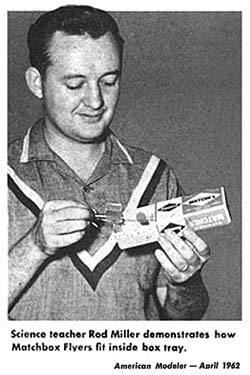
Australian Aeromodelling Groups - Bonus Updated April 5, 2003
Matchbox Flyers : Tiny airplanes that fit in a matchbox. Yes, and how they fly
In developing a series of miniature craft Rod started from scratch, employing much initiative. Bamboo was one of his first materials, knowing he could split it up very small. Tests on tissues for covering led to condenser paper.
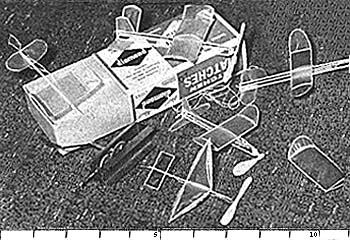
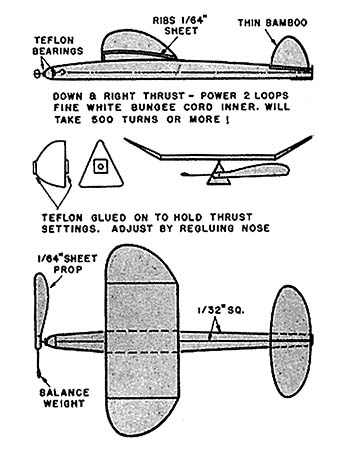 click image to view at a larger size
A word of caution--do not heat this material! It gives off toxic gasses when very hot. Rules for this event are simple. The matchbox limits plane size. Ready-to-fly model must fit within the box. The wing can't fold, the fuselage can't fold. Each entry in its ready-to-fly state is put in the tray section of the box which is passed thru the cover.
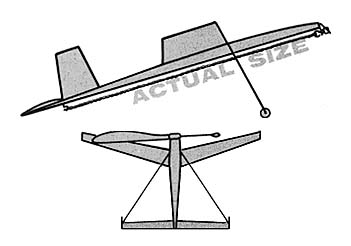
Just how big can a model be built? Inside of tray measures 1-3/8" x 2-9/16" x 4-1/2" Take advantage of the diagonal and your model can have a projected wingspan of 2-7/8" If you utilize the diagonal for length, a model can be as much as 4-5/8 " long.
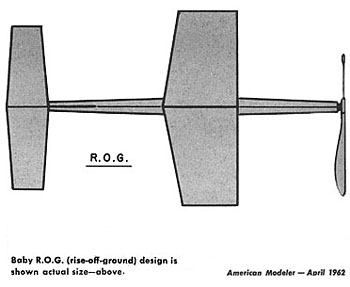
For a canard, we figure 100% would be practical. The fuselage can be small "sticks," or built-up triangles with 1/32-sq or smaller longerons at each corner, made long so plenty of rubber can be used. Propellers are 2 to 2-1/2 inches in diameter, almost equal to the wingspan. Two blades work better and are lighter than a single blade with counterbalance.
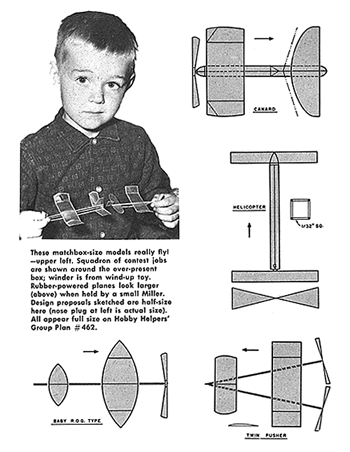 click image to view at a larger size
Contests can be held almost any place, even outdoors during calm weather. Auditoriums too small for regular indoor models are perfect for matchbox miniatures. Club attendance is stimulated by conducting "M.B." contests after meetings. It's an interesting new phase in building. Have some fun ... let yourself go,.. try Miller's matchbox miniatures.
The following appeared in Bud Tenny's column in the April 71 issue American Aircraft Modeler, yet another renaming of poor old Air Trails. The remark about the clever lad and his helicopter was prophetic. And note: 25 sec was more than enough to beat all the non-helicopters. That should give folks a target. David Dodge
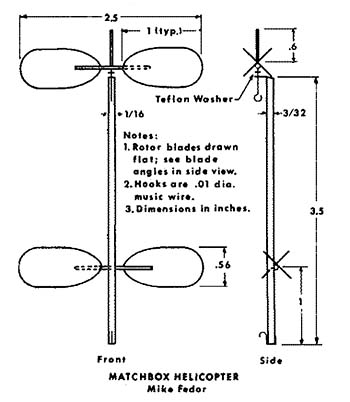 click image to view at a larger size
Mike Fedor and two friends showed up with matchbox helicopters. Mike won the event in Open handily with a 25-sec. flight, and Jim Haught won Junior with a slightly lower score. Mike's helicopter snuggles neatly into the standard kitchen matchbox with room to spare. It easily could have had a one-quarter inchgreater rotor span, and thus might have done even better.
|
© Copyright 1999-2005 CTIE - All Rights Reserved - Caution |
